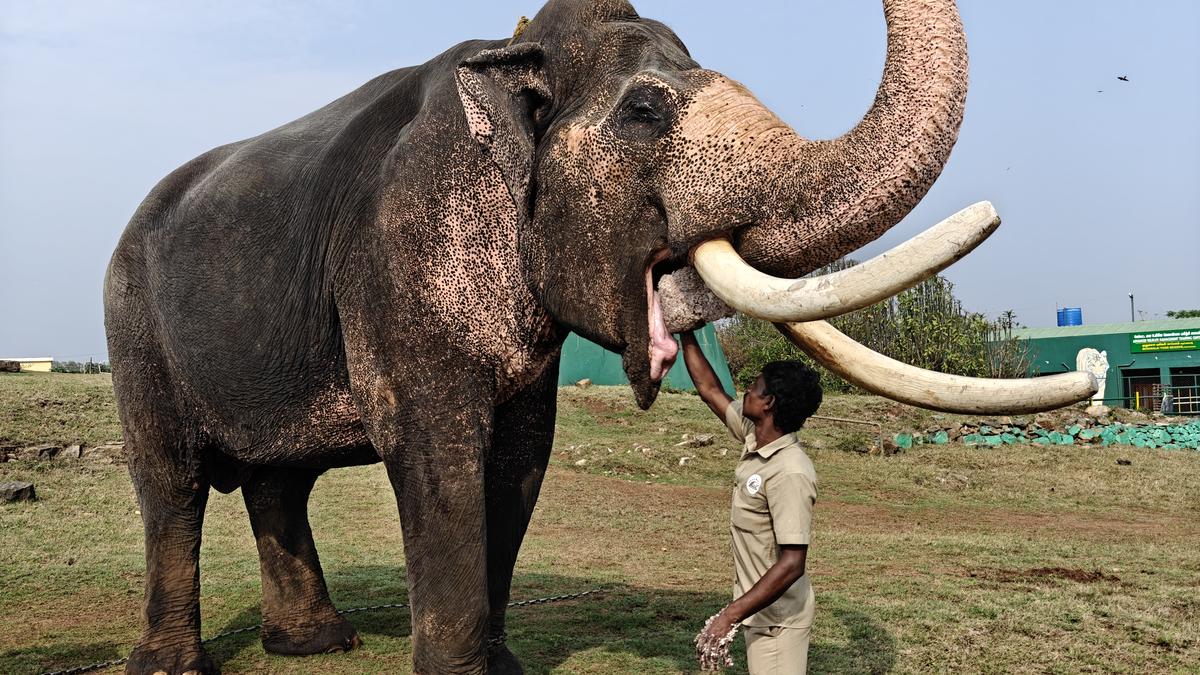As dusk sets over The Nilgiris, the river Moyar is bathed in a golden hue. Peacocks make loud, plaintive calls as they show off their beautiful plumage while grey langurs forage for berries. A stocky wild boar makes its presence felt briefly and the air is streaked with the loud calls of racket-tailed drongos and jungle mynahs. Tucked away amidst the Mudumalai Tiger Reserve (MTR), along the banks of the river, is the Theppakadu Elephant Camp, one of the oldest camps in Asia that dates back to the 1920s where as many as 27 elephants are rehabilitated.
Training time at the camp
| Photo Credit:
SATHYAMOORTHY M
Visitors can observe elephants in their natural habitat, observe their behaviour, and activities like feeding and bathing under the supervision of trained mahouts.
“During the British times, elephants were captured from the forest, trained, and used for hauling timber logs,” says C Vidhya, Deputy Director of MTR (Core Area) adding that a paradigm shift in forest conservation turned such camps to rehabilitation centres for elephants captured from the forest due to conflicts, issues, or injuries.
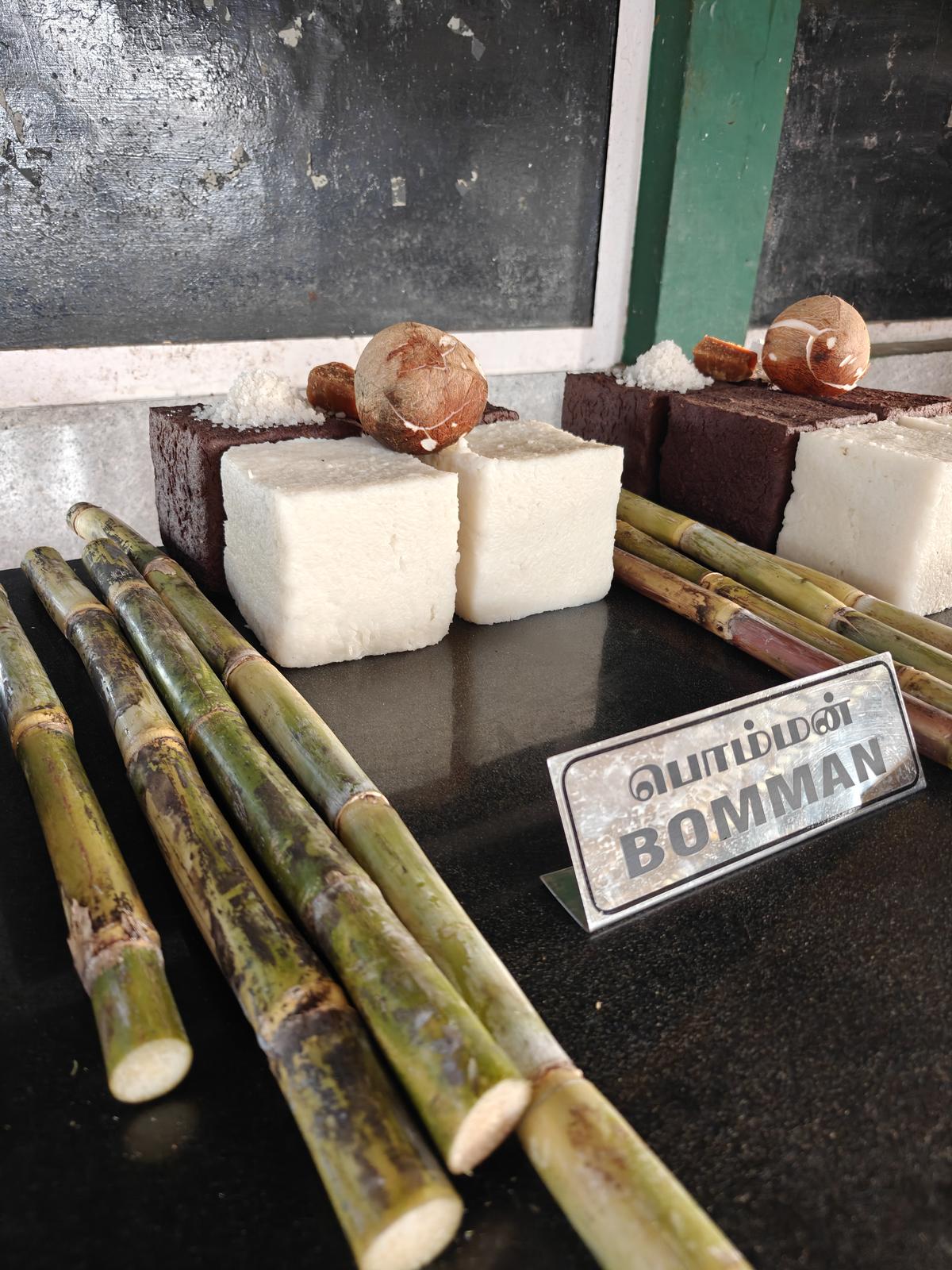
Food blocks made with mashed horsegram, ragi, and rice. shot on oneplus #frames of India
| Photo Credit:
K Jeshi
Inside the camp, a bunch of mahouts and kavadis, who are caretakers of elephants, are mixing giant food blocks made of cooked horse-gram, white rice, and ragi, throwing in a dash of mineral mix and salt, all under the watchful eyes of Dr K Rajesh Kumar, the camp veterinarian. “An adult elephant in the wild grazes for 16 to 18 hours a day and consumes about 200 kilograms of greens. As camp elephants have bathing rituals, training etc, there is loss of grazing time. This supplement diet, fed every morning and evening, makes up for it,” he says, adding that the feeding time also enriches the bonding between mahouts and elephants. He arrives at the diet chart based on age, weight, and physiology status, which is reviewed every three months.
Training is a routine for camp elephants
| Photo Credit:
Sathyamoorthy M
It is the only camp where elephants are trained without using conventional tools like ankush ( a stick with a pointed hook). The tribal communities of Kaatunaickers, Kurumbas, and Malasars have been the caretakers for generations. C Mari, a mahout for three decades talks fondly of 65-year-old Kamatchi, captured from Pollachi. He has taken care of six elephants like Senthivadivdu, Cheran, and Bama over the years. “Like children, they will take feed only when hungry. They are also naughty and like to play in the mud. We use commands like baitu, uttu, oopar dekh, enicho, a smattering of Hindi and Malayalam, while training them. Nutritious food is the key to maintain the overall health of elephants, especially in the initial years till they reach 10 or 15.”

The camp’s feeding ritual is unique. A jumbo kitchen runs like clockwork through the day with giant cooking vessels churning food for the gentle giants.
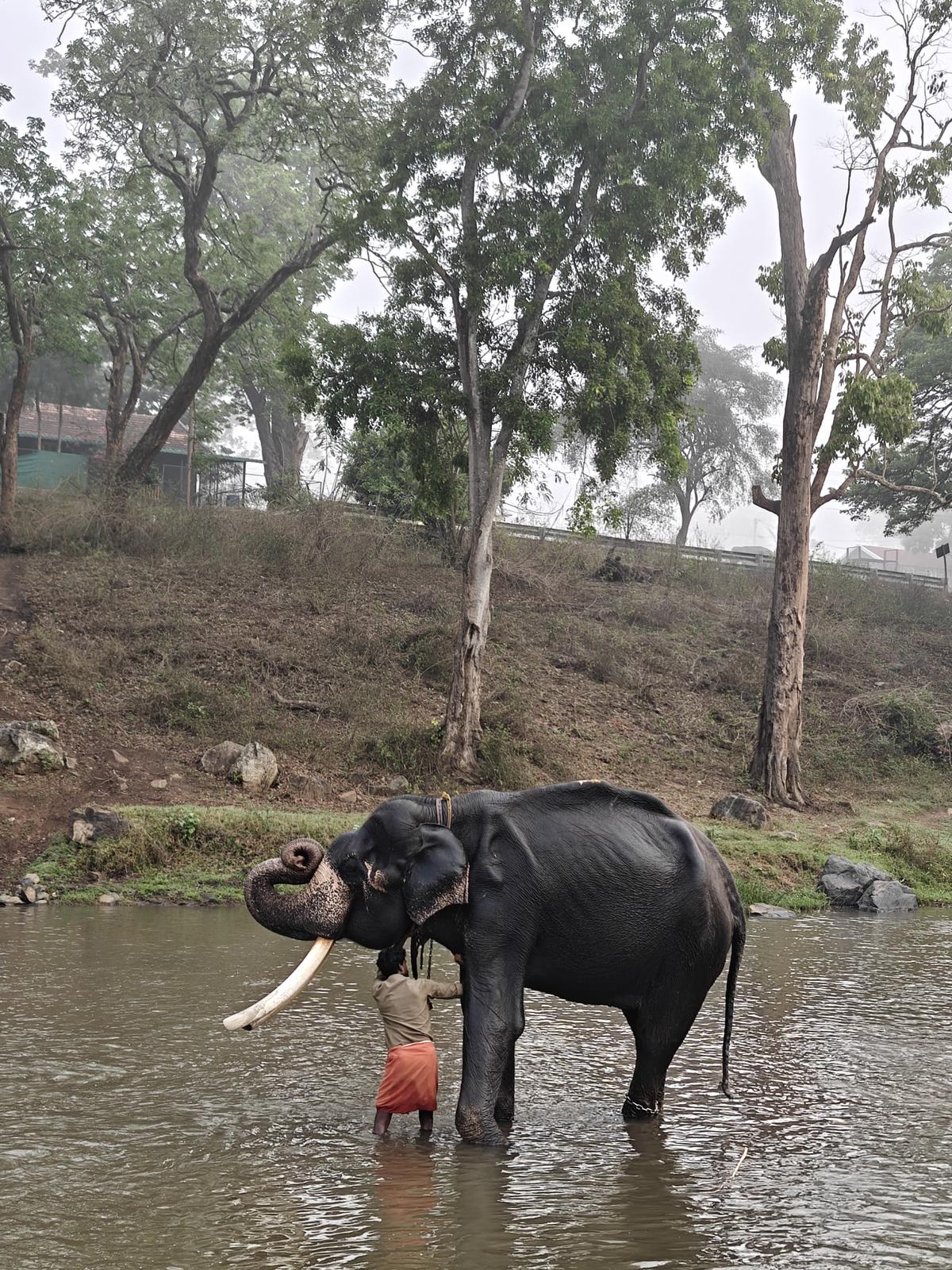
Th elephants are taken for a luxurious bath at the crack of dawn. shot on oneplus #frames of India
| Photo Credit:
K Jeshi
“Horsegram, ragi and rice are cooked for hours and mashed before placing them in square moulds. The micronutrients are always a part of their diet, unless there is a special diet prescribed by the veterinarian, like including fruits or chickpeas,” explains the Deputy Director.
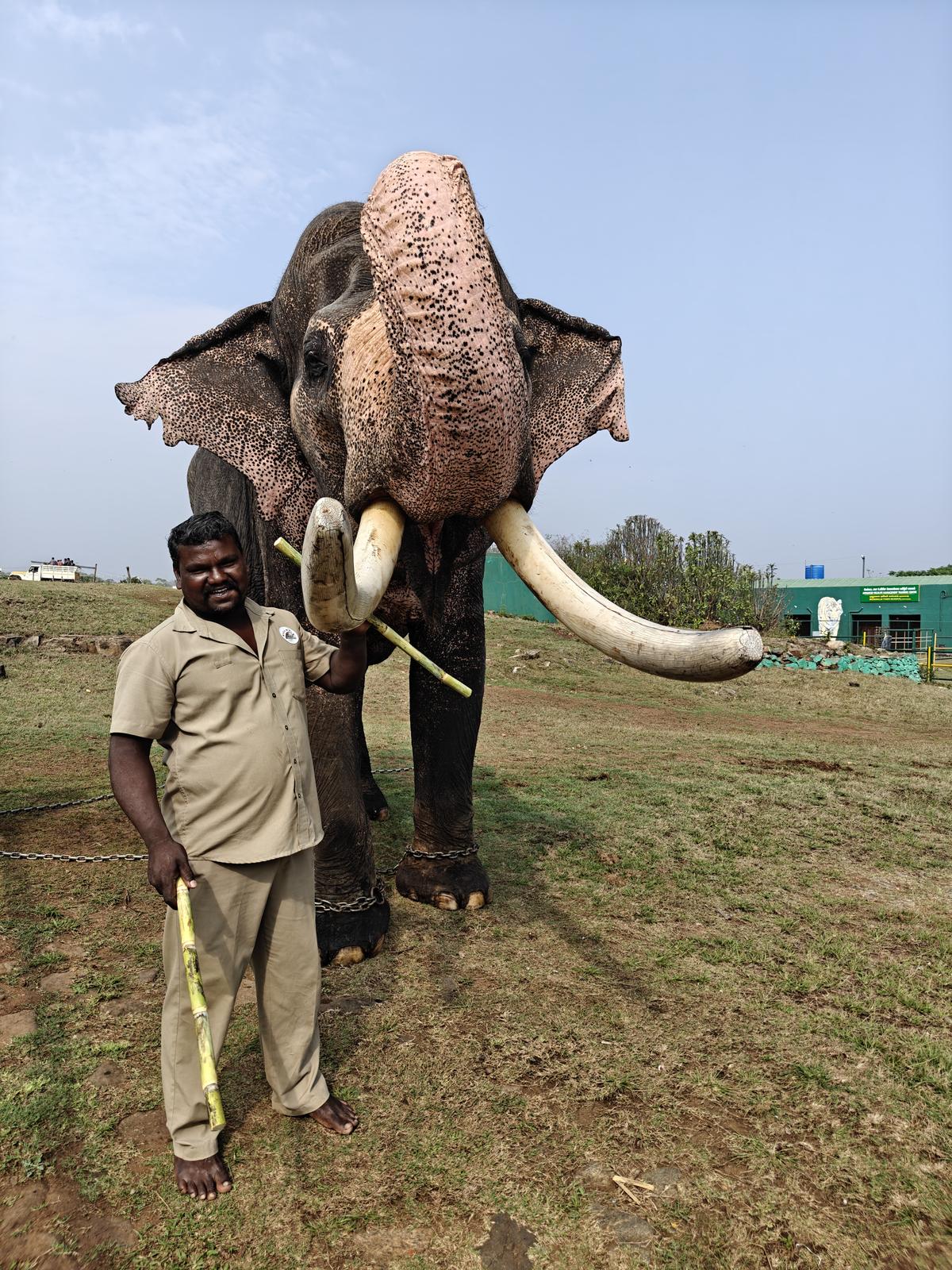
Sugarcane, coconut and jaggery are sweet treats for the elephants shot on oneplus #frames of India
| Photo Credit:
K Jeshi
The feeding routine also disciplines the mahouts and kavadis, she adds. It helps the veterinarian update any behavioural changes in elephants whether it is in musth (an aggressive state) period etc. “We place placards bearing elephant’s name next to the feed. The sugarcane, coconut and jaggery are sweet treats at the end of the meal. They also like to have sugar in their diet,” adds Vidhya.
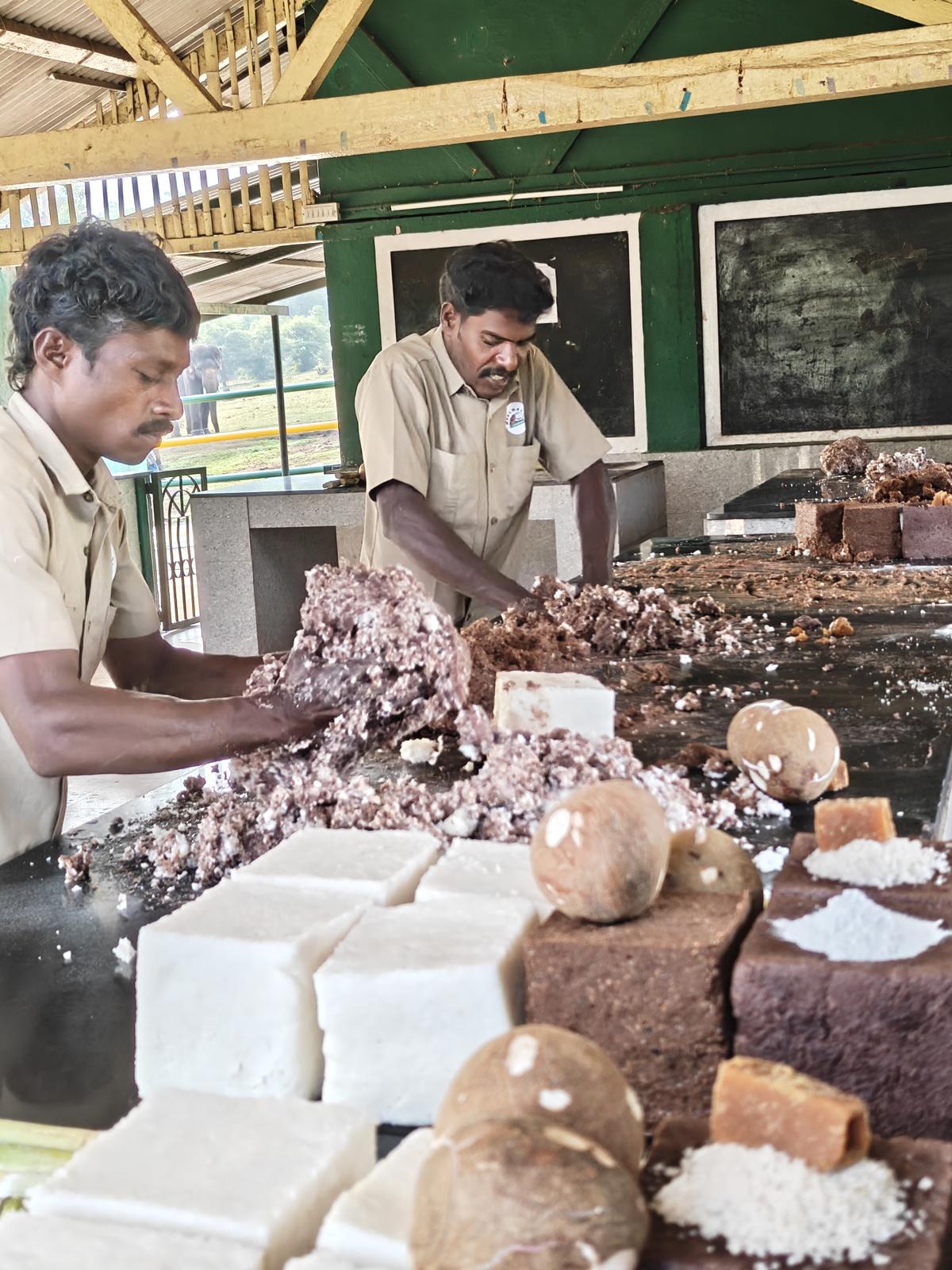
Mahouts and ‘kavadis’ mix the food for elephants. shot on oneplus #frames of India
| Photo Credit:
K Jeshi
The elephants in the camp are also used as kumkis to drive away wild elephants that enter human surroundings. “Most wild animals engage in ‘salt lick’ in the wild to get their dose of vitamins and minerals. We mix oral medicines along with food while treating sick elephants. We provide micro and macro vitamins and nutrients in the form of mineral mix. This gives a boost to their metabolism,” explains Rajesh as visitors begin to queue up.

A mahout rings the bell at 6pm signalling mealtime. The food blocks are hand-mixed and turned into giant-sized balls and served straight to the hungry elephants. M Megala, Forest Ranger for Theppakaadu Elephant Camp, says the elephants are taken for a luxurious bath at the crack of dawn, followed by a 30-minute training before arriving for the morning feed. M Maran from The Nilgiris, a retired mahout oversees the training. “I have worked here for 38 years. Once the rescued elephants are placed inside stalls, we offer sugarcane and nurture our bond. We teach a few commands, pat them and treat them with love. They reciprocate.”
Elephants are given supplement feed twice a day
| Photo Credit:
Sathyamoorthy M
While in Central India, camp elephants are fed jowar rotis, rice and grains cake is the norm here. “They graze seasonal fodder through the day. Male elephants like Santosh, and Bama, Kamatchi, Indra are out in the wild during nights as well. One of the elephants Murthy, believed to have killed 20 people, became the baby of the camp. So is Cherambadi Shankar captured from Gudalur that killed two people in a day. We have to bow to the caretakers. Such positive stories are heartening,” says Vidhya, adding, “What better way to understand that elephants and humans can co-exist harmoniously.”
Feeding time is 8.30am to 9am and 5.30pm to 6pm. Visit mudumalaitigerreserve.com
Published – April 09, 2025 04:51 pm IST
